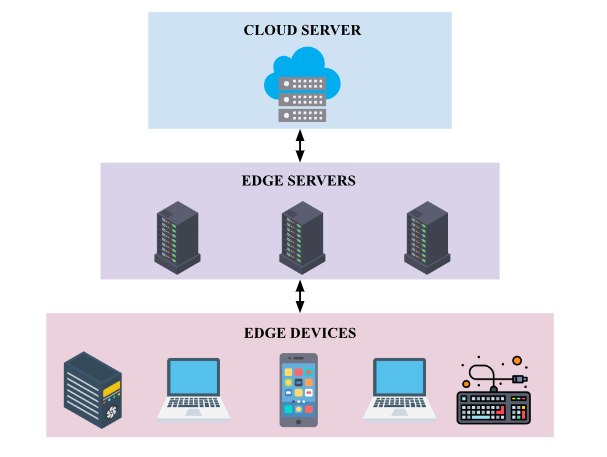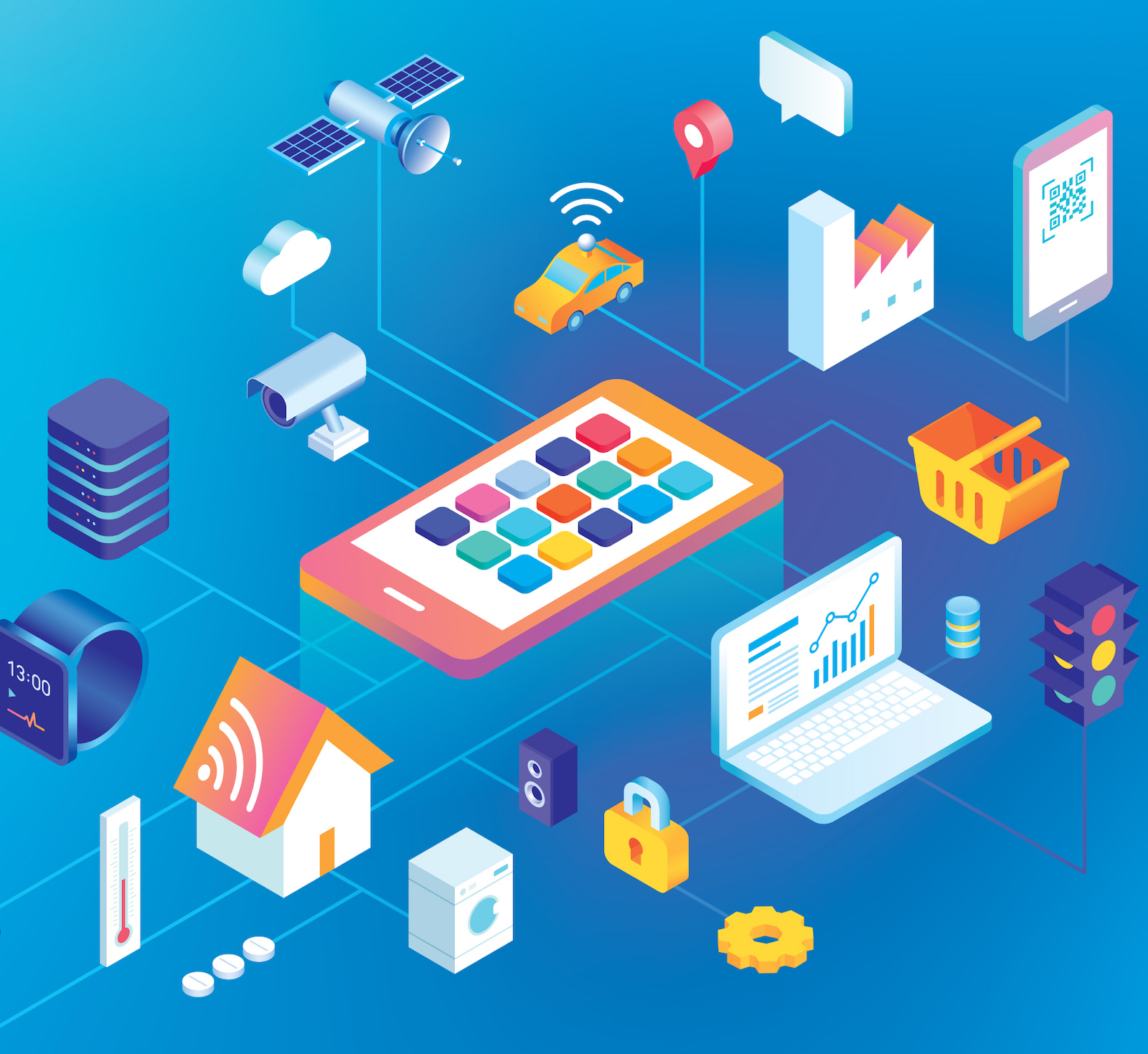How to Nail your next Technical Interview











You may be missing out on a 66.5% salary hike*













Interview Kickstart has enabled over 3500 engineers to uplevel.
We have witnessed a great boom in AI technology with recent advancements and innovations in IoT and deep learning. These technologies have made it possible to connect billions of IoT devices worldwide, generating zillion bytes of data at the network edge. Edge computing is a further invention in this technology, which helps reduce the congestion at the cloud services and helps businesses to access their large amount of data from every remote location using edge devices. The revenue of the edge computing market is projected to grow to $274 billion by 2025.
The fundamental concept behind edge computing is to gather, store, process, and analyze data much closer to the point of interest to accelerate reaction times and conserve bandwidth. Edge computing is a dispersed computing architecture that enables applications to be run close to data sources such as edge servers, IoT devices, and local endpoints.
The idea behind edge computing is to analyze data swiftly and in larger quantities near the point of generation, resulting in more immediate, actionable answers. Applications that demand little response time, which include IoT devices, self-driving automobiles, and automation in industries, benefit from edge computing. Edge computing can help data-intensive smart applications succeed because it places a high priority on gathering data and real-time processing.
The edge stage enters the overall picture when data has been collected, prepared for use, and moved. The data is eventually modified, saved, and used for training machine learning models after going through development and analytical steps, which are usually carried out in a public or private cloud setting. Then, it returns to the edge for the runtime inference phase, where those machine learning models are presented and analyzed.
The architecture of edge computing consists of the following components:

These are devices that regulate data flow at the boundary or edge. These gadgets are capable of handling calculations independently of the cloud. It consists of devices like security cameras, computers, laptops, and IoT sensors. They are responsible for collecting data and transmitting it to the edge computing nodes for computation.
Edge servers are positioned close to end users and handle basic computations. It can be found in places that are used for business, such as manufacturing facilities, businesses, and hotel chains. Common edge servers have 8 to 16 PC clusters, each including 16 or more CPUs, 16 or 32GB of memory, and a minimum of a Terabyte of storage. This part is a more potent computer that is placed closer to the edge devices. It manages processing jobs that require greater power that edge computing nodes are unable to control.
It acts as a gateway into the cloud. It regulates crucial network operations like managing firewalls, translating protocols, connecting wirelessly, terminating networks, etc. It is responsible for regulating the data flow to enable the most effective processing of the data as it is sent between edge devices and the cloud.
The cloud is a centrally located data center that offers computational capabilities for processing data and storing data. In an edge computing architectural design, the cloud is utilized for handling and storing data that requires more effort, whereas edge computing nodes are advantageous to handle processing that needs to be performed instantly. It can be either private or public, and it maintains models such as the neural network to help programs perform their functions.
Edge can revolutionize companies across all sectors and functions, from marketing and consumer engagement to manufacturing and administrative duties. Edge supports proactive and adaptable business processes, constantly in real-time, resulting in fresh, improved user experiences. By conducting data analysis locally instead of transferring it to distant cloud servers, edge computing reduces delay.
Centralized cloud-based systems may find it difficult to deal with the huge quantity of data produced as the number of linked devices (IoT) increases. By distributing processing among devices, edge computing increases scalability and simplifies the burden on the centralized framework.
Edge devices have the ability to function independently in cases where a network link to the cloud is broken, maintaining the ongoing functioning of essential functions. These characteristics are essential for applications like disaster restoration and vital facilities.
It increases overall performance and offers an enhanced, consistent user experience. The majority of processes are carried out on edge servers since it is quicker than performing identical computations on a cloud server. Users thus have an enhanced and more reliable experience with the product.
With edge computing, you may physically move artificial intelligence/machine learning (AI/ML)-powered programs in close proximity to data points like sensors, cameras, and mobile devices to enable them to collect insights more swiftly, spot patterns, and take subsequent actions without depending on conventional cloud networks.
In edge data centers, machine learning models process and deal with the data that arrives. They choose which tasks can be completed locally and which require the more potent cloud data center. However, edge devices do transmit data to the cloud data center; mobile edge computing enables you to check the data beforehand and only transmit what is necessary. Data processing is sped up, and real-time responses to rapidly changing situations are now possible because of the convergence of edge computing and machine learning.
Edge machine learning is a method that enables intelligent devices to deal with data locally by employing either local servers or machine learning algorithms at the device level. The term ‘edge’ denotes the computation that such deep learning or machine learning algorithms perform at the device or local level.
Edge machine learning makes use of both deep learning and machine learning methods to facilitate local data processing based on the application. Devices that use edge machine learning may efficiently handle incoming data at its source compared to conventional data processing technology. The data is then separated into categories that can be analyzed locally and those that require more advanced techniques for cloud processing.
We can analyze enormous data volumes in real-time with edge machine learning, which is presently not achievable with conventional cloud-powered devices but is essential for products like self-driving automobiles and healthcare devices.
The security issues with cloud storage of individual user data are reduced by edge machine learning in edge computing. Additionally, the cloud's load is considerably reduced. As edge devices decentralized data storage, this also lowers the likelihood of DDOS attacks on devices. Since the algorithms may be set up to disregard critical data fields, edge machine learning additionally boosts the data sets' security and privacy.

There are several applications and use cases of edge computing; here are some of the most prevalent ones:
There is a famous saying, Necessity is the mother of invention. Over the years, technology has proven this statement correct every passing year. The need for remote and effective networking invented edge computing which is advancing in innovation by integrating disciplines like machine learning and artificial intelligence. These technologies create opportunities for the youth of today to grab a fine job in the leading tech giants in edge computing. Sign up for the machine learning course program by Interview Kickstart which you help you prepare for upcoming opportunities.
Some of the disadvantages of edge computing are as follows:
The four edges of edge computing are enterprise edge, engagement edge, operations edge and providers edge.
The online streaming platform like Netflix can be an example of the use of edge computing. It uses edge computing to process the video content locally.
Edge and cloud are both important and can not replace each other. Cloud computing stores a large amount of data. Whereas edge computing is better for remote locations and helps to reduce latency.
Java is the most widely used language in edge computing. It is a reliable language for building secure and scalable edge computing applications.
Attend our webinar on
"How to nail your next tech interview" and learn
.png)






